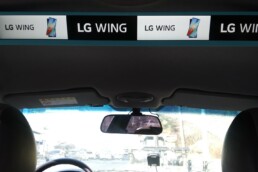Having a localization strategy is key when entering new markets. This is no different for entering South Korea. South Korea is a fast-growing market for global brands looking to target tech-friendly consumers. The retail eCommerce space alone is estimated to reach $100 billion by 2024. South Korea is ranked 10th in the world when it comes to GDP. Its commercial hub, Seoul, has already become the preferred commercial hub for many global brands.
When walking the streets of Seoul, you will notice many global brands lining the sidewalks. It is hard to not find a McDonald’s or a Starbucks near any subway station. However, as many global brands have been able to enter the Korean market, equal amounts have failed. Many global brands are still trying to get it right, but without taking the time to figure out what might be different about Korean consumers who have completely different cultural traditions. Although every brand failure has its own story, many have similar struggles.
This article will lay out the 6 most common mistakes global brands make when entering South Korea.
1. Thinking localization in Korea is just about translation

The first mistake global brands make is that they treat brand localization as translation. Translation alone can not be your main strategy for the South Korean market. Global brands need to also adapt to the Korean culture and gain insight into the Korean market. This is one of the leading causes of the failure of most global brands entering Korea.
A prime example of how important Korean culture is to Korean consumers comes with the case of the Japanese clothing brand Uniqlo. The brand had to pull a TV advertisement in South Korea after the brand was criticized for mocking South Korean victims of wartime sex slavery and forced labor. While Uniqlo stated that the ad had no political motive, the damage was already done. Therefore, it is critical to have a team comprised of Koreans that understand Korean culture which comes to the next mistake.
2. Entering South Korea using Joint Ventures as a Short Cut
Global brands look to partner with a Korean company to form a joint venture. This is a popular strategy so that they can combine their manpower to get a balanced team. It is one of the fastest ways to bring on local talent that already have deep insights into the Korean market. However, just simply putting a group of global colleagues and Korean colleagues usually doesn’t work. This is because they share vastly different mindsets, cultures, and different ways of working. Therefore, right from the start, there needs to be a clear shared policy or culture by the company so that these two groups of people can work together. A joint venture without this will struggle from the start.
3. Not fully understanding the Korean consumer

Global brands need to understand that South Korea has different nuances among consumers of different ages. The development South Korea has gained in the last 20 years is what Western countries went through in the last 100 years. Therefore, South Korean trends always move very quickly. Unless you quickly identify superficial kinds of trends and understand people of different ages in Korea, your brand cannot become a beloved one. Therefore you need to catch up with the changes so that your brand always keeps the same pace with the young consumers in Korea. Understanding the Korean consumer is a deep topic which we cover in targeting Korean consumers. Make sure to check that out.
4. Entering South Korea without fully doing their research
Global brands should invest at least 3 months in market research. This means physically coming to South Korea on a research trip. You need to understand the Korean market before committing to entering it. The research trip should focus on doing user research to better understand Korean users and markets before establishing dedicated teams and offices for it. A market research trip can be avoided if the global brands already have data on Korean customers. Why else would that want to enter Korea? Therefore they will be able to look into their public profiles and reviews of their existing users coming from Korea. You can even reach out to these users via surveys to gain better insights. Finding the right demographics of those that can be early adopters will be critical. In addition, getting feedback from Korean consumers should be a continuous process.
5. They feel South Korea is a gateway to Asia
The Asia region which ranges from China to Indonesia and from India to Korea and the Philippines is a major growth region in the 21st century. Many economists estimate that the Asia region will be the dominant force of the world economy with half of the entire middle-class population living there by 2050. Asia is such a huge market and each region has different needs, cultures, and insights. These variations also lead to differences in market structures, distribution systems, pricing, and reactions to other marketing variables. Therefore it is a mistake to assume that consumer needs in South Korea are the same in countries like China, Japan, and Singapore. Therefore when entering South Korea, the focus and strategy should be on South Kore alone. It is a country with a strong technology and eCommerce market with savvy tech-friendly consumers. Don’t assume South Korea will be a gateway to other Asian countries.
6. Global Brands don’t Understand the Role of the Korean government

The South Korean government has a very strong impact and control on the market no matter what category you are in. It is not to the level of the Chinese government, but many global brands are surprised how much power the South Korean government has on businesses. If you don’t do the businesses in the way the South Korean government prefers or they don’t find that your presence benefits the Korean market, it will be very difficult for your company to survive. Uber for example launched in Korea back in 2013. By 2015 the company stopped all operations. This was due to government regulations due to pressure from the taxi industry in Korea. The South Korean government ordered Uber to stop its operations in Korea. By the time Uber was allowed back a local service called Kakao Taxi was already dominating the market.
Entering South Korea
For global brands to succeed in the Korean market, is to understand the Korean market, understand the Korean consumer, and understand the policies of South Korea. If they do these three things they will have a great road to success. Entering the South Korean market does not mean your need to reinvent everything. McDonald’s for example has been popular in South Korea for over 20 years. At the core, they still sell the same popular items such as Big Macs, french fries, and chicken McNuggets. Although they do offer Korean-style burgers such as the Bulgogi Burger and area very quick to embrace the tallest technology such as delivery apps and self-ordering kiosks. They also run a lot of local marketing campaigns using Korean celebrities and celebrating Korean holidays. Therefore it is also important to follow successes set forth by global brands in addition to the 6 mistakes to avoid we mentioned.
John
John is the Co-Founder of Seoulz. He has covered the Korean startup & tech scene for over eight years and has written over 700 articles regarding the Korean startup ecosystem. He has brought global attention to Korea's tech scene using Google SEO. Email him at john@seoulz.com
Related Posts






